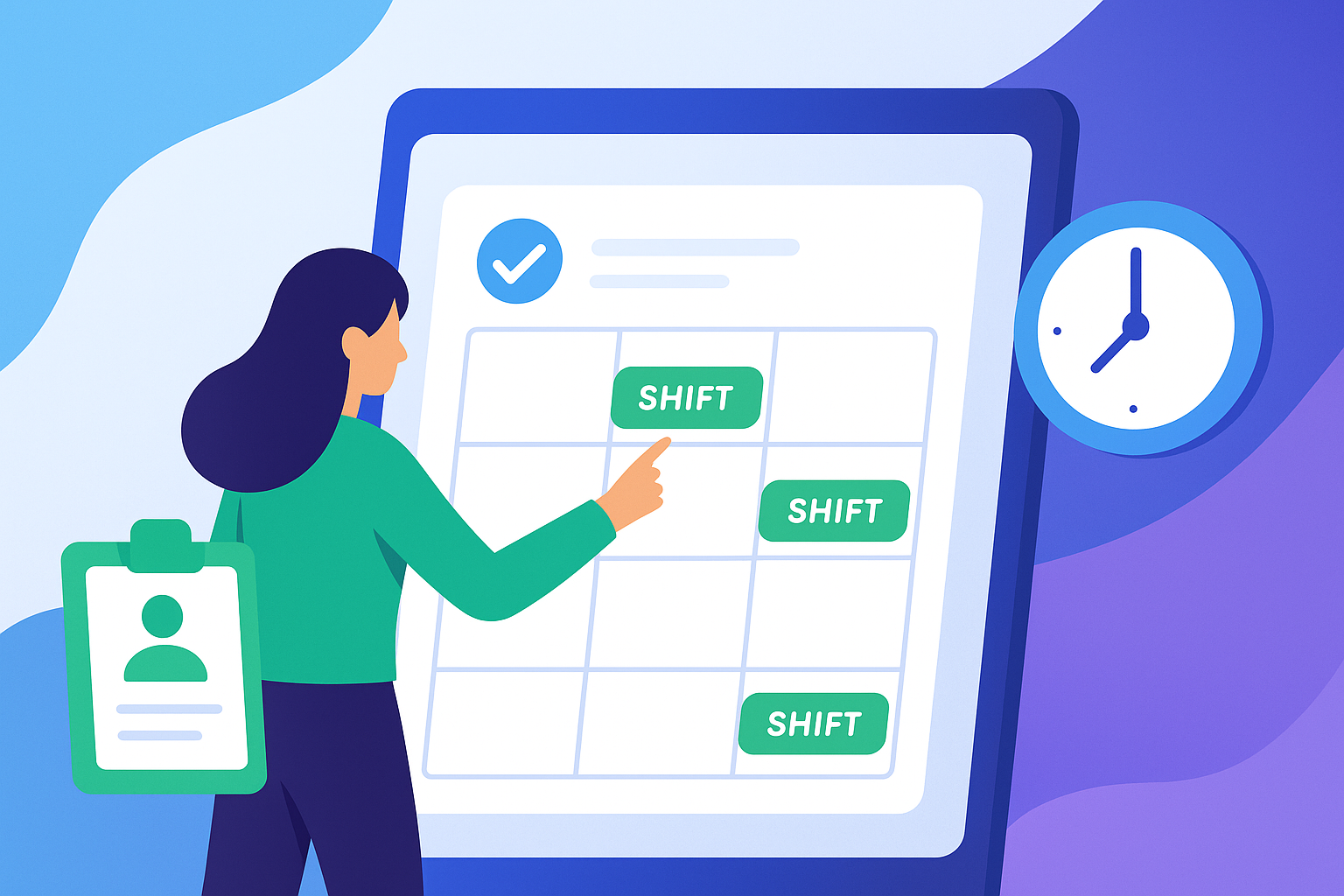Smart Guide to Event Staff Shift Scheduling

If you’ve ever scrambled to cover a no-show or juggled last-minute changes, you know staff scheduling can feel like solving a puzzle where the pieces keep shifting. With the right strategies, you can turn chaos into a system that keeps your team confident and your event seamless.
This guide shows how to plan, schedule, and manage shifts effectively; whether you’re coordinating employees, contractors, or volunteers. From forecasting needs to handling real-time adjustments, you’ll find practical staffing strategies that reduce stress and improve outcomes.
What is Event Staff Management?
Event staff management is the process of aligning the right people with the right roles at the right times. It goes beyond simply creating a roster, it ensures coordination across front-line staff (ushers, registration, catering) and behind-the-scenes roles (security, AV, logistics).
Strong staff management creates:
- Clear responsibilities and accountability
- Better use of team strengths
- Smooth handoffs during shift changes
- Faster responses to unexpected challenges
Whether working with volunteers on a budget or paid staff at a large venue, efficient management is key to professional, stress-free events.
Planning Shifts: Forecasting and Scheduling
Forecast Staffing Needs
- Estimate by attendance & event type: Use past data or ticket sales to set baselines.
- Map by role & time: Opening day often demands extra hands just before the event starts and during the opening hour, especially at the entrance to check-in attendees, where smooth staffing directly impacts the attendee experience.
- Account for venue complexity: Multi-floor spaces, outdoor sites, or limited parking increase staff needs.
- Build in a volunteer buffer: Expect some no-shows and train backups.
Build Smarter Schedules
- Balance productivity with rest and avoid assigning critical duties during meal hours.
- Overlap shifts slightly for smooth handoffs.
- Rotate demanding and lighter tasks within one shift.
- Respect staff preferences when possible. People work better on schedules that fit their natural rhythms.
Use Event Planning Tools
Modern event planning tools streamline shift scheduling. Look for platforms that:
- Centralize staff data in one place
- Match shifts to skills and availability for job assignments
- Send real-time updates about changes
- Connect with other event planning tools (registration, schedules, communications)
Integrations simplify coordination, reduce last-minute surprises, and free you from juggling spreadsheets.
Managing Real-Time Adjustments
Even the best plan needs flexibility. On event day, watch for signals like long lines, bottlenecks, or delays, and be ready to shift staff quickly.
- Cross-train team members so they can cover multiple roles.
- Set clear change protocols (e.g., coordinators approve swaps through a shared chat).
- Use mobile alerts for instant communication across the team.
- Designate team leads empowered to make quick decisions without delays.
Strong communication and flexible staffing strategies stop small issues from snowballing into major disruptions.
Training and Preparing Your Team
Preparation ensures confidence and consistency.
- Role-specific training: Teach the exact skills and likely challenges for each role.
- Scenario drills: Simulate issues such as a late keynote, long check-in lines, or equipment failures.
- Cross-training: Train reliable staff to cover multiple roles for added flexibility.
- Practice sessions: Run mock check-ins or tech rehearsals to expose bottlenecks early.
- Feedback loops: Collect insights from staff and attendees after each event to refine training.
Handling Shift Changes and Backup Plans
No plan is perfect, so build flexibility into your staffing strategies.
- Shift swap rules: Require advance notice where possible; match skills, not just availability.
- Emergency protocols: Maintain on-call staff and a clear escalation path for urgent decisions.
- Flexible culture: Emphasize adaptability during training, and reward staff who step up.
- Psychological safety: Encourage early reporting of conflicts without fear of criticism.
This proactive mindset keeps operations stable and staff engaged, even when plans change.
Leveraging Event Planning Tools
Technology makes shift scheduling and volunteer coordination far more efficient.
- Real-time dashboards show who’s checked in and where coverage may be thin.
- Automated alerts flag understaffed areas before problems arise.
- Built-in communication tools keep updates targeted (registration staff only see registration updates).
- After-event reporting tracks no-shows, peak staffing needs, and cost analysis, helping you improve future events.
Modern tools replace paper schedules and endless phone calls with clarity, speed, and actionable data.
Effective event staff management is the difference between chaos and control. With accurate planning, clear shift scheduling, adaptable staffing strategies, and real-time adjustments, you’ll keep both your team and attendees happy.
The more you empower your team through training, communication, and volunteer coordination, the smoother every event becomes. By putting these strategies into practice, you’ll simplify event management and give your team the clarity they need to shine.
When staff know where to be and when, your focus shifts from firefighting to delivering memorable event experiences.
Ready to simplify staff scheduling and event management? Schedule a personal demo today and see how ClearEvent can help your team run smoother, stress-free events.
Frequently Asked Questions (FAQ)
How far in advance should I schedule event staff shifts? It’s best to schedule shifts at least 2–4 weeks before the event, giving staff time to confirm availability. For large or complex events, extend this window to ensure coverage and reduce last-minute changes.
What’s the most efficient way to coordinate volunteers? Centralize volunteer coordination with an event planning tool that lets volunteers sign up through custom event registration forms that let them share their availability. This reduces back-and-forth communication and helps organizers see coverage gaps in real time.
How do I keep staff engaged during long events? Rotate tasks to avoid fatigue, build in breaks, and provide simple perks like snacks or recognition during the day. Keeping morale high ensures better performance and attendee experience.
What’s the difference between staff scheduling and staff management? Scheduling is about assigning people to shifts, while staff management includes communication, training, real-time adjustments, and post-event feedback. Both are essential for smooth event operations.
How can technology improve real-time adjustments at events? Event planning tools with dashboards and mobile alerts allow organizers to spot understaffed areas quickly. Real-time insights help redeploy staff instantly, preventing service disruptions and keeping events on track.
